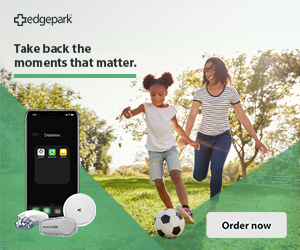Training guide to type 1 diabetes: Leaving your child alone with someone else
So, the day has finally come to leave your child with type 1 diabetes (T1D) with a new caregiver. Are you feeling excited? Perhaps a little nervous?
Even if this person is a close friend or family member you fully trust, it is crucial that you take the time to clearly explain the logistics of managing such a complicated condition. Bonus points if you use visual aids like simple cheat sheets, step-by-step procedures or emergency plans!
By establishing a simple but effective guide to type 1 diabetes for your child's new caregiver, you can rest assured your child with T1D will be in good hands. Here are several tips to keep in mind as you craft a set of guidelines.
Know that Google is not a doctor
Google can be used to research almost anything, but it's important to remember that Google is not a T1D expert. Starting with this baseline can help you focus your research (and the ensuing conversations) on the specifics of your child's T1D symptoms, devices and logistics.
Let the caregiver know that you likely have the answers to all their questions — and you're only a phone call away. If you're confident in your child's ability to manage their condition and troubleshoot problems, you can offer them as a credible resource as well.
Clarify unique management regimens
The current T1D management landscape is as varied as the people it encompasses. Some use pumps while others prefer injections, some blood glucose testers and others use continuous glucose monitors (CGMs)! A lot of people count carbohydrates, and many have carbohydrate exchanges or seemingly magic formulas for mixing in fiber. There are even different types of insulin for different reasons!
It's important to ensure the caregiver understands that the specific management techniques you outline are what works best for your child. It's fine to draw parallels if the caregiver has previous experience with T1D, but make sure they aren't going to force a new — or different — management technique on your child just because they are more familiar with it.
This is also a great point in the conversation to discuss your child's diabetes symptoms and associated jargon. If possible, describe how your child acts when experiencing low or high blood sugar. Tell the caregiver about any "diabetes code talk" you may have with your child. For instance, when they say, "I need a juice box," they're basically noting, "I have low blood sugar." These tips will provide context for the caregiver to hang their quickly-evolving diabetes knowledge on.
Understand the physics of T1D devices
After providing an outline of your child's T1D management regimen, it's time to start discussing how to actually use the diabetes devices. Here is where a cheat sheet may come in handy!
If your child uses an insulin pump, write out simple, step-by-step instructions for the basic functions that may be required. This can include programming a meal bolus or calculating a correction. Adapt this method to whatever device your child uses (insulin pen, syringe, etc.) and bring the device(s) with you during the discussion. Walking through the procedure and monitoring the caregiver's performance during a hands-on trial run can help you feel even more confident.
This may seem excessive, but remember, the new caregiver likely hasn't had to deal with as many needles and equations as you have! The more comfortable they feel, the more likely you are to have a positive outcome with the whole experience.
Prepare an emergency plan
Parents often spend a lot of time and energy crafting emergency plans for the children's care. It's a good idea! This type of plan is arguably even more important for caregivers watching over a child with T1D.
A quick-access emergency contact card is a great resource to give your child's caregiver. Along with your phone number (and backup phone numbers) include numbers for your child's endocrinologist and your preferred urgent care location, emergency room or hospital. Ask the caregiver to program these phone numbers into their phone for easy access in case the card is misplaced.
Also, consider providing a copy of your medical insurance card and discussing how calling an ambulance may provide more immediate medical attention in a severe situation. Planning for an emergency event can help prevent mishaps during a critical time! By providing this guide to type 1 diabetes, your child's caregiver won't feel overwhelmed.
Interested in accessing other guidance around caring for children with T1D? Check out the library of insightful articles found on the Edgepark website.




